Twinkle Twinkle Little Thermonuclear Power Plant
- By Faith Tucker
- July 6, 2011
- 5 Comments
The heavens above have often been a source of comfort and inspiration for us mere mortals on Earth. A few examples include the classic inspirational quote, “Shoot for the Moon, even if you miss you’ll land among the stars” (~Les Brown) or a child staring out their window and wishing upon a star, “Star light, star bright, The first star I see tonight; I wish I may, I wish I might, Have the wish I wish tonight.” And don’t forget the classic children’s book “Goodnight Moon” by Margaret Wise Brown and Clement Hurd (check out this look at the astrophysics of “Goodnight Moon”).
Motivational value aside, the science of some of these astronomical references can be somewhat dubitable. However, there is one heavenly cliché that is surprisingly accurate, and that is the exclamation, “You’re a star!” – most commonly used by doting parents or grandparents when a child has completed their first ballet performance, aced a test or scored a goal. No, children are not literally stars though they may shine like them in the eyes of their parents, but we are all much more closely related to our stellar neighbors than you may realize.
This week’s interdisciplinary jaunt takes us into the realm of chemistry and nuclear physics as we explore where all of the elements on the periodic table came from, also know as the mad world of stellar nucleosynthesis. Similar to most of my peers, chemistry was the bane of my existence in high school, but I promise that the genesis of the basic components of the world we live in is well worth reliving high school chemistry and physics just this once. In an ardent attempt to keep this blog from turning into a stale lecture, I thought we’d trace the adventures of one (hypothetical) proton named Polly from the first moments of the Universe as she travels along the periodic table.
But first, a few handy terms to remember:
- Elements: These are the various basic types of matter that make up the periodic table. A given element is defined by how many protons are present in its nucleus.
- Nucleus: This is the inner core of an atom composed of protons and neutrons held together by the Strong Nuclear Force. Temperatures are so high in stars that generally electrons will have been stripped off nuclei, so we won’t worry about them.
- Fusion: This is the process by which two nuclei combine (or fuse) together to form some higher mass element. Fusion processes resulting in elements between Hydrogen and Iron release energy while those resulting in heavier elements require an input of energy in order to occur.
- Nucleosynthesis: This is literally the synthesis (or formation) of nuclei.
We’ll start Polly the Proton’s story at the very beginning with one very Big Bang. In the moments immediately following the Big Bang, the Universe was composed of something of a ‘hot quark soup’. Quarks are the very smallest building blocks of matter and they come in a variety of colors and flavors (don’t get me started on the lunacy of particle physics…). Anyways about one second into time as we know it the unbearably hot infant Universe cools enough for three quarks (two up quarks and one down for those of you who are keeping score) to group together, thereby forming Polly the Proton. Her life as a Hydrogen nucleus has begun. A few minutes later the temperature is low enough for some of Polly’s other proton and neutron friends to find one another and form Helium. But Polly is a purist and stays as Hydrogen, as do most of the protons, resulting in a Universe that is approximately 75% Hydrogen and 25% Helium.
Now fast forward a few hundred million years through the messy bits of Universe’s Dark Ages and whatnot, and we find Polly swirling and falling into an increasingly dense pocket of gas. The mutual gravitational attraction pulls the cloud of matter tighter and tighter, increasing its temperature. The only way for this protostar to stop collapsing under the effects of gravity is for some other force to push against and counteract the inward pull of gravity. This is where fusion comes in! Ideally the protostar’s rich Hydrogen nuclei population would begin fusing together to form Helium, thereby producing energy that streams outward, both holding the star up against further collapse and making it shine. Sounds easy, right?
But there is a problem. Protons are positively charged, and while opposites may attract, like particles certainly do not. This persistent repulsion caused by the protons’ electromagnetic charge is called the Coulomb Barrier. As affable as Polly might be, she must be traveling incredibly fast in order to get close enough to another proton for the Strong Nuclear Force to take over, allowing them to fuse into Helium. However, according to scientists’ understanding of physics in the early 1900s when all of this was being discovered, even the insides of stars were not nearly hot enough for this fusion mechanism to be a practical or effective energy source.
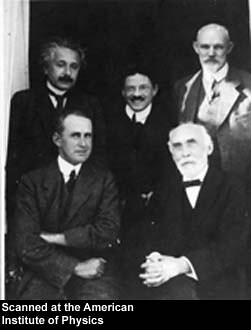
Front row: Arthur Eddington and Hendrik Lorentz; back row: Albert Einstein, Paul Ehrenfest and Willem de Sitter at the Leiden Observatory. September 1923. Credit: AIP Emilio Segre Visual Archives
Despite the apparent impossibility of fusion though, the fact that it does indeed happen soon became unmistakable. In response to the critics who argued that fusion in stars was absurd, Sir Arthur Eddington said (I imagine with a perfectly straight face), “We do not argue with the critic who urges that stars are not hot enough for this process; we tell him to go and find a hotter place.” That should fill your snarky history quote quota for the day!
Anyways, poor Polly feared she would never achieve anything with her life beyond mere Hydrogen-dom, but then in comes our friend quantum mechanics to save the day. By the late 1920s, the likes of Niels Bhor, Werner Heisenberg, and Erwin Schrodinger (among many others) had added previously unimaginable layers and complexities to our understanding of physics – one such new concept is that of ‘quantum tunneling’. After a couple billion years of unsuccessful attempts to connect with other protons, Polly will eventually quantum tunnel straight through that pesky Coulomb Barrier – it sounds crazy and physically illegal, but that’s exactly why we love quantum mechanics. Now she can successfully fuse with another proton friend and she has become a Helium nuclei!
Over the lifetime of her star, Polly will undergo a long series these fusion reactions. A couple hundred million or billion years later the Helium nucleus she is part of will fuse with another Helium nucleus to form a Carbon nucleus. Then that Carbon nucleus will fuse into Neon, Sodium, and Magnesium. And on and on this series of reactions goes, producing energy that holds out the outer layers of the star and shines light out for all of us to see. Polly hops, skips and jumps her way through the periodic table until eventually she finds herself in an Iron nucleus located in the core of the star.
Iron is a unique element because the fusion of two Iron nuclei into something heavier requires that energy be put into the system, instead of producing energy out of the reaction as the earlier fusion reactions did. This means that when the core of the star is composed entirely of Iron there is no more fuel with which to run the necessary fusion reactions that hold the star up against gravity. Without the outward pressure of fusion the star begins to collapse in on itself rapidly, but it can’t collapse forever. It reaches a point where it simply cannot be packed any tighter and all of the nuclei collide with each other and rebound outwards in an unbelievably powerful explosion – supernova!
Check out these great videos by the Afterschool Universe gang demonstrating how a supernova collapses and then rebounds out in an explosion!
Suddenly, Polly is being bombarded by enormous flux of neutrons as she is violently blown outward, making her a neutron-rich isotope of Iron (still only 26 protons, but now with more neutrons than the average Iron nucleus). These extra neutrons then undergo a process called inverse Beta-decay in which the Weak Nuclear Force transforms a neutron into a proton (plus an electron and an electron antineutrino). With each of these Beta-decays Polly races through the rest of periodic table, eventually coming among the likes of Thorium and Uranium – the heaviest of the naturally occurring elements.
And just like that Polly has progressed from a simple, lone proton to part of one of the heaviest nuclei found in the Universe over what has now been billions of years. Without nucleosynthesis taking place in the cores of stars and supernovae our Universe would have nothing in it but a whole ton of Hydrogen, a good smattering of Helium, and the tiniest little bit of Lithium, Boron, and Beryllium. That means no Carbon for carbon-based life forms, no oxygen to breath, and no gold jewelry to oogle at. Thankfully we live in a much more interesting universe in which supernovae create and then eject material like Polly out into interstellar space where it can get entangled in yet another collapsing cloud of gas and become part of a new star, planet or person!
And that, children, is why your parents were not lying when they told you that you are a star, though star dust may actually have been more accurate!
If you want to know more, check out this great site that walks you through how exactly each element is formed!



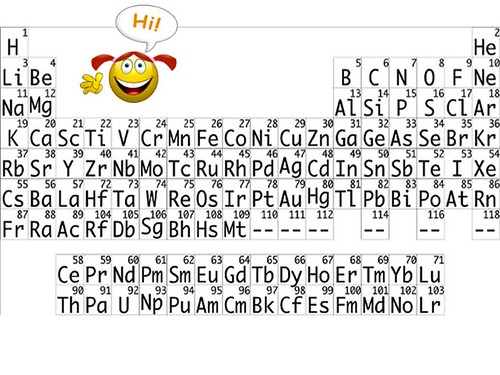

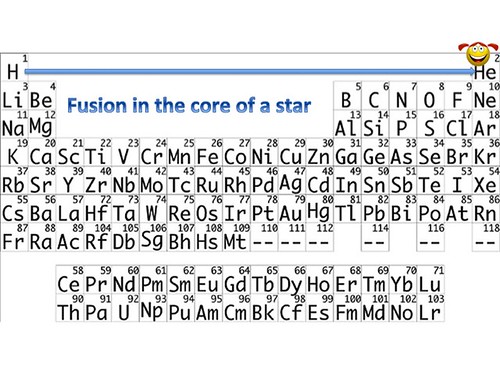
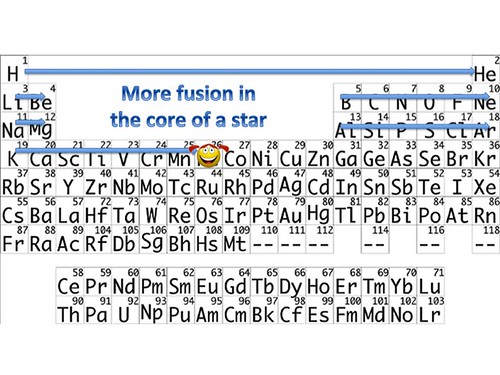
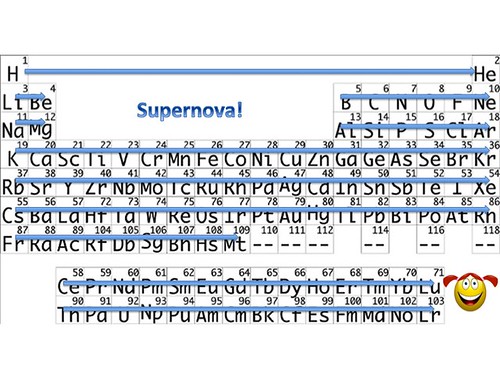

I never really thought of that before
Great post for the science educator and/or enthusiast! Also, thanks for introducing me to NASA’s Afterschool Universe program. I hope to integrate the program into my planetarium’s activities.
I do have one concern: discussions on Coulomb Barrier, quantum tunneling and Beta-decay may be a little advanced for the average reader. While I want to learn more about these topics, you may have lost some readers.
Also, you have a small typo. The “5” key is really close to the “2” key on the number pad. Iron has 26 protons, not 56.
But all in all, great post! I cannot wait to read more.
Jason – Thanks for your feedback! Fixed the typo. We know that sometimes these topics are a little above the average knowledge level… but that’s also where we know many readers will turn to Google or Wikipedia! Hopefully Polly the Proton has eased the way a little bit.
Sure thing! I did not mean to sound critical; I want to link to the post on my planetarium’s Facebook page and was thinking of general audiences.
And now, to google quantum tunneling!
ou really make it seem so simple with your presentation but I find this topic before really hard to understand. It seems too complicated and very broad for me. I am looking forward for your next article.